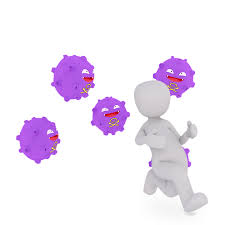The difference between coronavirus and flu is needed to be known in the current scenario. You may be considering traveling to any country with either type of virus, but know that you can make it through if you are well-prepared for both types. Knowing the difference between coronavirus and flu will help to prevent the spread of either disease.
IS CORONAVIRUS A FLU STRAIN?

The answer to this query is clearly NO. Coronavirus flu strain has nothing to do with normal flu strain. It is much more than that. Though both have some things in common, they are still not the same. The main difference between coronavirus and flu is that it’s a strain of the H1N1 virus that has mutated. This means that it’s different from other strains in the same family.
ALSO READ: Church Nursery Guidelines for Covid 19
CORONAVIRUS VS. FLU HOW TO KNOW THE DIFFERENCE

The seasonal flu can become airborne, so is it possible for you to contract the virus while outside of your home. Also, while you are at home, you may not recognize it like the flu, or it may pass as something else.
- Coronavirus is Far Ahead from the Complications of Flu
Flu is known to be transmitted by direct contact with someone who has the flu. It is thought that the virus that causes the flu can enter your body through the air you breathe, but it is also possible for you to come into contact with the virus by touching surfaces that have become contaminated.
- Coronavirus Treats People According to Their Immunities and Age-Levels
The difference between coronavirus and flu is greater in the case of children, the elderly, people with compromised immune systems, and other individuals with weakened immune systems. Flu can also be spread to those who are too young to be contagious, such as those who are too young to have the flu.
- Coronavirus Doesn’t Match with Any of the Different Types of Flu
The viruses that cause flu are the same ones that cause pneumonia, a serious illness. Pneumonia can be fatal if left untreated. The risk is not only in the most common flu strains but also in any strains that may become more prevalent in a particular area.
- Flu Epidemic VS Pandemic
What is the difference between coronavirus and flu? The bacteria that causes it is not the same type of bacteria that causes the common cold. Your chances of becoming infected are even higher if you already have one type of flu.
FLU VIRUS & CORONAVIRUS

The flu viruses are known to mutate and continue to change, so you should think about traveling to another country where the outbreak of flu is in its infancy. If you were to get flu in a country where the flu is more common, your odds of contracting the flu are increased.
- Transmission Through the Air
Flu is transmitted through the air that we breathe, which makes the chances of getting flu from someone at home even higher. When the flu virus is airborne, the chances of having a virus becomes higher.
- Common Symptoms
If you’ve concerns that you may have contracted flu from someone in your home, do not be afraid to ask questions. The symptoms of flu are much like common cold symptoms, including a sore throat, runny nose, cough, and fatigue. If you have these symptoms, the best place to start is with your own home. For some, the symptoms may not be strong enough to warrant visiting a doctor, so they do not seek treatment until they start to have trouble breathing.
Most cases of flu do not go away on their own. A physician will likely be called upon to give you a prescription for medication and/or an antiviral, and your health care provider can help you find the answers to any questions you may have.
FLU EPIDEMIC VS PANDEMIC

The difference between an epidemic & a pandemic is not always easy to define. There are always some ways to know the differences when it’s about epidemic vs pandemic vs endemic. There are some common features of these categories that can help you identify whether or not an illness is likely to be a pandemic.
Here are the differences between an epidemic and a pandemic:
- Terminology
First, there is a difference in terminology. Because an epidemic is caused by a single disease and is a large-scale phenomenon, it is often referred to as a public health emergency. A pandemic, on the other hand, is caused by a combination of diseases that have a greater spread rate. In order to examine whether or not a disease is a pandemic, one must examine the details of the outbreak and the type of diseases that have been implicated.
- Timing
Second, there is a difference in timing. While an epidemic can appear at any time, pandemics are very likely to occur in the same year as the disease it is currently afflicting. This causes a problem because the first symptoms of an epidemic can be delayed.
- The Scaling of the Disease
Third, there is a difference in size. An epidemic is typically considered to be a large-scale disease outbreak with millions of cases; a pandemic is generally thought to only have an effect on several thousand people. However, it can also occur in a small number of cases, especially if the disease has no identified origins. The smallest of pandemics can cause as many as 100 million cases worldwide.
- Fatalities
Fourth, there is a difference in fatalities. An epidemic can have a large death toll since the disease can be very contagious. A pandemic can also be deadly in large numbers because it can target only certain populations. A huge majority of a population will not be susceptible to the virus, but certain groups of people will become affected in massive numbers.
- Large/Small Population to be Infected
Fifth, there is a difference in availability. With an epidemic, there is no real restriction on the ability to spread the disease, and this allows a large number of people to be infected. With a pandemic, there is often a temporary or permanent freeze on the movement of people, which usually results in a smaller percentage of the population getting infected.
- Symptoms
Sixth, there is a difference in symptoms. With an epidemic, the disease can spread rapidly through a population. With a pandemic, there may be a higher rate of local outbreaks, but the disease can still be carried from person to person. While an epidemic may infect millions, a pandemic may cause severe local outbreaks.
The above six differences should help you distinguish between an epidemic and a pandemic. Although these terms aren’t mutually exclusive, they do separate the two extremes of the spectrum. Pandemics are much more dangerous than epidemics, although there are many types of pandemics and, therefore, many types of outbreaks.




